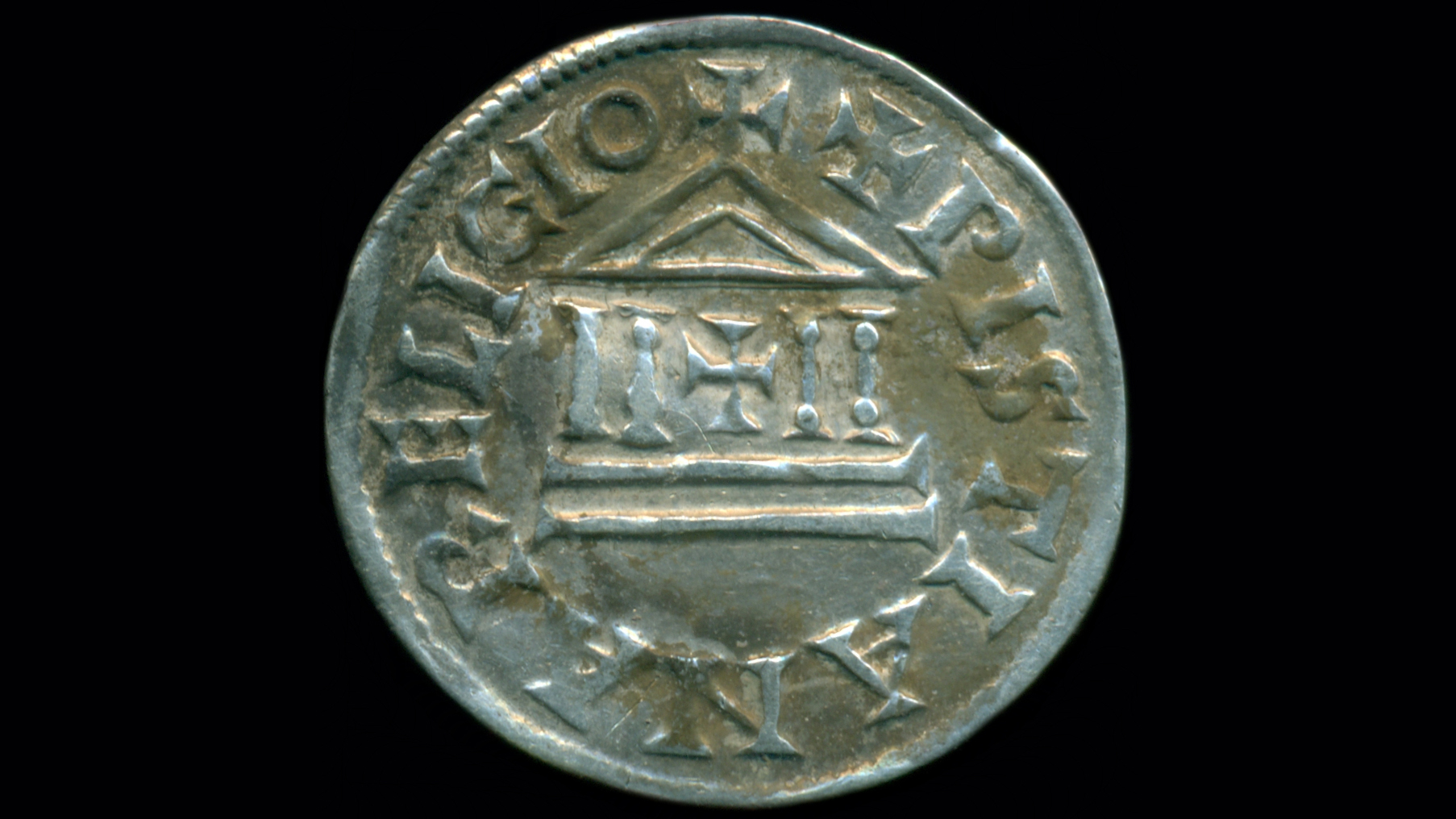Hoard of silver coins may have been part of historic ransom to save Paris

A hoard of silver coins minted in the Carolingian Empire about 1,200 years ago has been unearthed in northeastern Poland and may have been part of a historic ransom to save Paris from a Viking invasion.
It's the first time anyone has found so many Carolingian coins in Poland. Only three such coins — of a distinctive style with Latin inscriptions and a central crucifix — have been found in the country before now.
The Carolingian Empire was founded by the Frankish king Charlemagne — Charles the Great — and spanned much of modern France, Germany, Switzerland and northern Italy in the eighth and ninth centuries.
Related: 12 bizarre medieval trends
Archaeologists think the newfound coins may have come from the Viking trading town of Truso, which was then located near the Baltic coast about 60 miles (100 kilometers) west of the farmer's field where they were found.
And if the coins did come from Truso, it's possible that they were part of an immense ransom of gold and silver paid by a Carolingian king to prevent invading Vikings from sacking the city of Paris.
"If a larger number of the coins can be attributed to Paris, then yes, it is possible — and some have already been attributed to Paris," said Mateusz Bogucki, an archaeologist and coin expert at the University of Warsaw in Poland. But "it is way too early to give such an interpretation," he told Live Science.
Get the world’s most fascinating discoveries delivered straight to your inbox.
Regardless, the distinctiveness of the coins raises interesting questions about their origins, Bogucki said. At the time the hoard was hidden or lost, the first medieval Polish kingdom had yet to be established, and the Slavic tribes in the region used mainly Arabian silver dirhams paid in exchange for slaves by traders from the Muslim caliphate, based in Baghdad far to the south.
Carolingian coins
Metal detectorists discovered the first handful of the coin hoard in November 2020, in a field near the town of Biskupiec.
The finders, who had permission from the provincial government for their activities, stopped any further searching and kept the location secret until experts from the nearby Museum of Ostróda could investigate the find.
Related: 30 of the world's most valuable treasures that are still missing
By March 2021, archaeologist Luke Szczepanski and his team had unearthed a total of 118 coins from the field — 117 of them minted during the reign of the Carolingian emperor Louis the Pious, who ruled from A.D. 814 until 840, and one coin minted during the reign of his son Charles the Bald, who ruled until A.D. 877.
Such coins are extremely rare in Poland, which was well beyond the lands ruled by the Carolingian dynasty. The only three Carolingian coins previously unearthed were found at the archaeological site at Truso, which had been established by Norse traders by the eighth century and was famous for its trade in amber, furs and slaves.
It seems likely that the owner of the hoard of coins found near Biskupiec had obtained them in Truso, Bogucki said, but there is a possibility that they had come from somewhere else and were being taken to Truso for trading. The coins have no marks that show exactly where and when they were minted, but researchers can learn more about their origins by studying characteristics like the shapes of the letters in their Latin inscriptions, he said.




Viking shakedown
The archaeologists aren't sure how the hoard of silver coins came to be hidden or lost near Biskupiec. The region was probably an uninhabited wilderness at the time, and archaeologists have not found any traces of a nearby settlement, Szczepanski told Science in Poland.
One intriguing possibility, however, is that the coins came from Truso and that they were originally part of a ransom paid by the Carolingian king Charles the Bald to Vikings threatening Paris, his capital city.
Norse raiders frequently attacked the Frankish heartlands of the Carolingian Empire — today's northern France and western Germany — after the late eighth century. Historical records compiled by monks suggest that in A.D. 845 a large fleet of Viking ships sailed up the Seine and laid siege to Paris, then located on an island in the river.
Charles the Bald reportedly paid the invaders 7,000 livres, or more than 5 tons of silver and gold, to prevent them from sacking the city, Bogucki said, and it's possible that some of the coins found near Biskupiec were part of that ransom.
Charlemagne was King of the Franks in the late eighth century when his armies conquered most of western Europe. He was crowned Emperor of the Romans by the pope in Rome in A.D. 800; his rule and those of his dynasty are known as the Carolingian Empire, which later became Europe's Holy Roman Empire. Charlemagne's son Louis the Pious succeeded him as emperor in 814, and the empire was divided among Louis' sons in 840.
Charles the Bald, one of Louis' sons, ruled the western kingdoms and became the Carolingian emperor in 875. Portrayals from the time show him with a full head of hair; historians speculate that he may, in fact, have been very hairy and that the nickname was used ironically, or that his "baldness" referred to his initial lack of lands compared with those of his brothers.
Originally published on Live Science.
Tom Metcalfe is a freelance journalist and regular Live Science contributor who is based in London in the United Kingdom. Tom writes mainly about science, space, archaeology, the Earth and the oceans. He has also written for the BBC, NBC News, National Geographic, Scientific American, Air & Space, and many others.
 Live Science Plus
Live Science Plus





